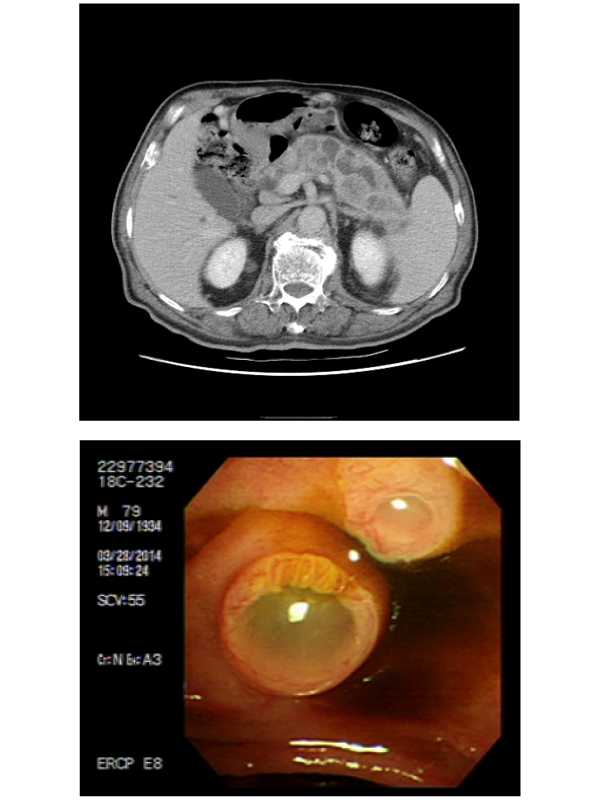2376-0249
Case Blog - International Journal of Clinical & Medical Images (2016) Volume 3, Issue 2

Author(s): Chin-Chung Lin
Figure 1: Enlargement of the pancreas with diffuse heterogeneous low density lesions and possible pancreatic duct dilatation can be noted (red arrow) .
Figure 2: Mucin-producing tumor, distal common bile duct and pancrease (fish mouth papilla).
Figure 3: Intraductal papillary mucinous neoplasm (IPMN) composed of columnar tumor cells with low-grade dysplasia (HE 100X, HE 200X).
Clinical Presentation A 79 year old man complained generalized weakness with epigastric pain about 2 days. On physical examination, he was found to have soft, painful, tenderness over the epigastric region. A contrast enhanced abdomen CT showed enlargement of the pancreas with diffuse heterogeneous low density lesions and possible pancreatic duct dilatation can be noted (Figure 1). ERCP (Endoscopic Retrograde Cholangiopancreatography) reported suspect mucin-producing tumor, distal common bile duct and pancreas (Figure 2). It was taken biopsy by the ERCP and histopathological examination of the biopsies showed intraductal papillary mucinous neoplasm (IPMN) with low-grade dysplasia (Figure 3). IPMN was reported as a “mucin-producing tumor” by Kazuhiko Ohashi in 1982. Clinical symptoms include abdominal pain, nausea and vomiting. Once a doctor has reason to believe that a patient may have an IPMN, he or she can confirm that suspicion using one of a number of imaging techniques. These include computerized tomography (CT), endoscopic ultrasound (EUS), and magnetic resonance cholangiopancreatography (MRCP). These tests will reveal dilatation of the pancreatic duct or one of the branches of the pancreatic duct. IPMN are important because some of them progress to invasive cancer (transform from a benign tumor to a malignant tumor) if they are left untreated. Just as colon polyps can develop into colon cancer if left untreated, so too do some IPMN progress into an invasive pancreatic cancer. IPMN therefore represent an opportunity to treat a pancreatic tumor before it develops into an aggressive, hard-to-treat cancer.
 Awards Nomination
Awards Nomination

